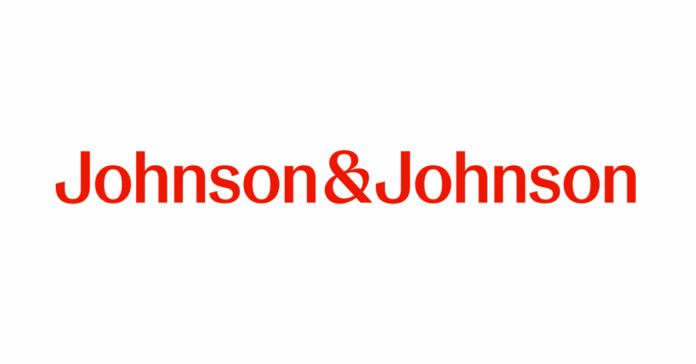NEW BRUNSWICK, NJ – July 16, 2025 – In a testament to its enduring strength and adaptive strategy, Johnson & Johnson (NYSE: JNJ) today announced a strong second quarter for 2025, with solid operational sales growth across both its MedTech and Innovative Medicine segments, leading to an optimistic upward revision of its full-year guidance. The results underscore the healthcare titan’s capacity to drive innovation and expand market presence, even as it navigates the complex currents of biosimilar competition and evolving regulatory landscapes.
Exceeding Expectations: A Detailed Look at Sales and Earnings
Johnson & Johnson reported worldwide sales of $22.447 billion for Q2 2025, marking a 4.3% increase on a reported basis and an impressive 5.5% operationally, excluding the impact of currency fluctuations. This performance was largely propelled by significant contributions from both of its core business segments.
The Innovative Medicine segment, encompassing pharmaceuticals, delivered $13.906 billion in sales, achieving a 3.8% operational uplift. This growth was fueled by the continued double-digit expansion of key oncology products such as DARZALEX and ERLEADA, which have benefited from expanded indications and deepening market penetration. However, the segment also grappled with the anticipated headwinds from STELARA, where biosimilar erosion accounted for approximately 170 basis points of impact, aligning with the company’s previous projections. This demonstrates the ongoing challenge posed by biosimilar introductions, a trend that management acknowledges will intensify in the latter half of the year, mirroring the erosion curve observed with HUMIRA.
Shining particularly brightly, the MedTech arm, dedicated to medical devices, recorded $8.541 billion in sales, representing a robust 7.3% reported growth and a 6.1% operational expansion. The cardiovascular portfolio was a standout performer, experiencing an impressive 22.3% operational growth. This surge was significantly bolstered by the recent strategic acquisition of Shockwave Medical, which continues to integrate seamlessly and enhance J&J’s electrophysiology offerings. Additionally, normalized procedure volumes post-pandemic and the successful launch of new, innovative products contributed positively to the Orthopaedics and surgery sub-segments. The Vision care division also maintained steady gains, reinforcing the strength of J&J’s diversified portfolio in mitigating risks across individual product areas.
For the quarter, reported earnings per share (EPS) stood at $2.82. When adjusted for special items, such as restructuring costs and ongoing litigation expenses, the adjusted EPS remained at $2.82, comfortably surpassing analyst consensus estimates. Adjusted net earnings reached $6.699 billion, reflecting diligent operational efficiency and prudent cost management. Furthermore, the company’s gross margin saw a slight improvement to 69.4%, a positive outcome attributed to a favorable product mix and ongoing supply chain optimizations.
Financial Robustness: A Deeper Dive into Key Metrics
Johnson & Johnson’s robust financial health is further evidenced by its profitability metrics. The trailing twelve-month (TTM) Return on Equity (ROE) stands at approximately 29.5%. This strong ROE, calculated from a TTM net income of $21.81 billion against an average shareholders’ equity of around $74 billion, positions J&J favorably against industry averages for large-cap healthcare firms, showcasing its efficiency in generating profits from shareholder capital.
Similarly, the TTM Return on Tangible Assets (ROTA) is approximately 22.2%. This metric, derived from TTM net income divided by tangible assets (total assets of $180.1 billion minus intangibles and goodwill of $81.8 billion, yielding $98.3 billion in tangible assets), highlights J&J’s capacity to generate strong returns from its core operational assets. This is particularly significant in a sector where intangible assets, such as intellectual property and acquired goodwill, often play a substantial role.
These metrics are not merely figures; they are a clear indication of J&J’s disciplined approach to capital allocation. Over the past year, the company has consistently returned significant value to its shareholders through both dividends and share repurchases. The quarterly dividend, currently at $1.24 per share, translates to an annual yield of approximately 3.2% based on the current stock price. This extends J&J’s remarkable track record as a “Dividend King,” boasting over 60 consecutive years of dividend increases, a powerful signal of financial stability and commitment to shareholders. The company also executed approximately $1.5 billion in share repurchases during Q2, part of a broader $10 billion authorization, signaling management’s confidence in the inherent value of the stock.
Valuation and Outlook: A “Hold” Signal with Strategic Optimism
An updated valuation analysis provides further insight into J&J’s current investment appeal. Utilizing the conservative Buffett Valuation Method, which projects Free Cash Flow (FCF) at a 3% growth rate over 10 years and discounts back at an 8% rate, the intrinsic value per share is estimated at $149.77. The McGrew Valuation Method, adapted for non-growth stocks like J&J (given its negative 5-year FCF CAGR of -2.7%), yields an identical intrinsic value of $149.77 per share. Applying a 25% margin of safety, the calculated buy price for both methods falls to $112.33.
With the last closing price of $155.17 on July 16, 2025, JNJ currently trades at a slight premium to its estimated intrinsic value. This suggests a “Hold” status for the stock, indicating that the market has largely priced in the company’s near-term strengths, though it may not be fully discounting potential longer-term risks such as upcoming patent cliffs.
Management’s outlook for the remainder of 2025 remains decidedly optimistic, evidenced by the raised full-year guidance. Operational sales are now projected to range from $92.7 billion to $93.1 billion (representing 4.5%-5.0% growth), an increase from prior estimates. Reported sales are anticipated to be between $93.2 billion and $93.6 billion (5.1%-5.6% growth). Adjusted operational EPS is guided to $10.63-$10.73 (6.5%-7.5% growth), with adjusted EPS forecasted at $10.80-$10.90 (8.2%-9.2% growth). Executives highlighted an expected acceleration in the second half of the year, driven by new product launches and the continued positive impact of recent acquisitions like Shockwave. They also reiterated that the negative impact of the Medicare Part D redesign is expected to remain consistent throughout the year.
Innovation and Industry Landscape: Charting the Future Course
Strategically, Johnson & Johnson is reaffirming its commitment to innovation. The second quarter saw significant advancements in its robust pipeline, including key regulatory submissions for subcutaneous TREMFYA in immunology and positive clinical data for nipocalimab in rare diseases. In MedTech, the integration of Shockwave is progressing as planned, further enhancing J&J’s comprehensive cardiovascular portfolio. The company also underscored its dedication to sustainability and diversity, with ongoing initiatives focused on reducing carbon emissions and expanding access to healthcare in underserved regions globally.
Looking at the broader industry, J&J operates within a dynamic environment shaped by macroeconomic factors such as inflation, supply chain disruptions, and geopolitical tensions. However, its highly diversified portfolio—spanning pharmaceuticals, medical devices, and its legacy in consumer health (following the Kenvue spin-off)—provides a substantial buffer against these volatilities. Analysts consistently point to J&J’s significant R&D spend of $3.44 billion in Q2 (15.3% of sales) as a key differentiator, fueling a robust pipeline of over 90 programs currently in various stages of development.
While investor sentiment is generally positive, with the stock outperforming the S&P Healthcare index slightly year-to-date and Wall Street’s consensus target price hovering around $170, implying some upside, certain risks persist. The ongoing talc litigation remains a material wildcard, despite reserves currently at $11 billion. The potential for accelerated revenue erosion from biosimilar competition for blockbuster drugs like STELARA, coupled with persistent regulatory scrutiny on drug pricing, represents additional headwinds. Macro factors, including interest rates and currency fluctuations (J&J noted a 1.2% forex headwind in Q2), also require close monitoring.
In conclusion, Johnson & Johnson’s Q2 2025 results firmly reinforce its position as a leading global healthcare powerhouse. With strong performance across its key segments, upward revisions to its full-year guidance, and an unwavering commitment to innovation, the company appears well-equipped to navigate future challenges. While current valuations suggest a “Hold” at present price levels, long-term investors are likely to find continued comfort in J&J’s fundamental stability and impressive dividend track record. As the healthcare sector continues its rapid evolution, Johnson & Johnson’s unique blend of established strength and forward-thinking strategic initiatives positions it to continue delivering significant value for years to come.

